Related Research Articles
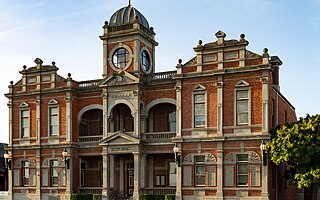
Castlemaine is a town in Victoria, Australia, in the Goldfields region about 120 kilometres northwest by road from Melbourne and about 40 kilometres from the major provincial centre of Bendigo. It is the administrative and economic centre of the Shire of Mount Alexander. The population at the 2021 Census was 7,506. Castlemaine was named by the chief goldfield commissioner, Captain W. Wright, in honour of his Irish uncle, Viscount Castlemaine.
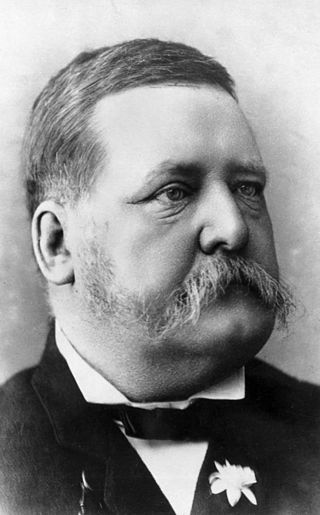
Sir Thomas McIlwraith was for many years the dominant figure of colonial politics in Queensland. He was Premier of Queensland from 1879 to 1883, again in 1888, and for a third time in 1893. In common with most politicians of his era, McIlwraith was an influential businessman, who combined his parliamentary career with a prosperous involvement in the pastoral industry.

Sir William Austin Zeal was an Australian railway engineer and politician, Senator for Victoria in the Parliament of Australia.

Australian rules football in Victoria is the most watched and second most participated code of football. Australian rules football originated in Melbourne in the late 1850s and grew quickly to dominate the sport, which it continues to. Victoria has more than double the number of players of any other state in Australia accounting for approximately 42% of all Australian players in 2023 and continues to grow strongly. Only Soccer in Victoria has more football participants, though the code's growth in Victoria has made up much ground lost to that code over previous decades such that they have now a similar number of players. The sport is governed by AFL Victoria based in Melbourne. The national governing body, the AFL Commission is also based in Melbourne.
The Melbourne, Mount Alexander and Murray River Railway Company was a railway company in Victoria, Australia. It was established on 8 February 1853 to build a railway from Melbourne to Echuca on the Victorian-NSW border and a branch railway to Williamstown. The company struggled to make any progress and on 23 May 1856, the colonial government took over the company and it became part of the newly established Department of Railways, part of the Board of Land and Works. The Department of Railways became Victorian Railways in 1859.

The Geelong and Melbourne Railway Company was a railway company in Victoria, Australia. Alexander Thomson, a member of the Victorian Legislative Council, introduced and mentored a bill to incorporate the Geelong and Melbourne Railway Company. On 8 February 1853, the operation of Melbourne and Geelong Railway Company and Mount Alexander and Murray River Railway Company was approved by the Victoria Government. Thomson was one of the directors and presided at the first shareholder meeting. Work began at the Geelong end in 1854 but progress was slow due to a labour shortage caused by the Victorian gold rush, so the Victorian government hired out 100 prisoners to the company at a daily rate of five shillings each. They were housed in prison hulks moored in Corio Bay. English engineer and surveyor, Edward Snell, undertook the survey and design of the line, including a station and extensive workshops at Geelong, and a number of bluestone and timber bridges.

Australian rules football began its evolution in Melbourne, Australia about 1858. The origins of Australian football before 1858 are still the subject of much debate, as there were a multitude of football games in Britain, Europe, Ireland and Australia whose rules influenced the early football games played in Melbourne.
The Deniliquin railway line is a broad-gauge railway line serving northwestern Victoria, Australia. The line runs from the New South Wales town of Deniliquin into Bendigo, before turning south-southeast towards Melbourne, terminating in Docklands near the central business district. It is a major trunk line both for passenger and freight trains, with many railway lines branching off from it.

The Main Southern Railway is a major railway in New South Wales, Australia. It runs from Sydney to Albury, near the Victorian border. The line passes through the Southern Highlands, Southern Tablelands, South West Slopes and Riverina regions.
Australian rules football was first organised in Victoria in 1859 when its rules were codified by the Melbourne Football Club.
The Moolort Line was a cross-country railway line which connected Maryborough and Castlemaine in Victoria, Australia. The line, now defunct, starts in Castlemaine, passes through Campbells Creek, Yapeen, Guildford, Strangways, Newstead, Moolort, and Carisbrook, before joining the Mildura line at Maryborough.
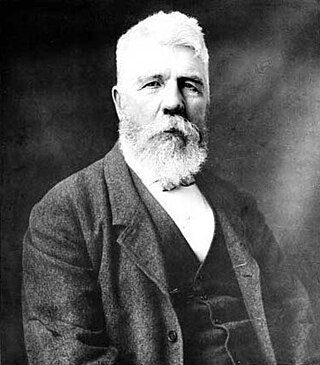
George Christian Darbyshire was an English and Australian civil engineer. He was the second son of George Darbyshire, also a surveyor and railway engineer.
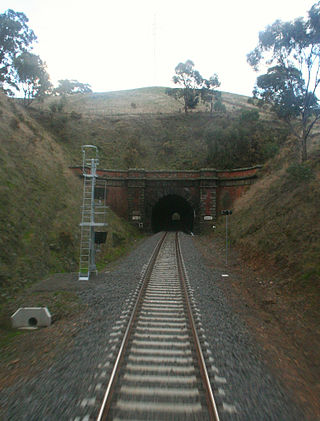
The Australian state of Victoria has only ever had about 10 tunnels on its railway network, with some others on private narrow gauge tramways. This is due to the relatively easy terrain through which most of the lines were built.
Joseph Brady was an Irish born, civil engineer active in Queensland, New South Wales and Victoria, Australia, in the late nineteenth and early twentieth century, undertaking works on railways, water supplies and ports. Among his more important works were the Coliban Water Supply for Bendigo, and Melbourne Port improvements.

The Taradale Viaduct is a large wrought iron box girder bridge over Back Creek at Taradale, Victoria on the Bendigo Railway in Victoria Australia. It was erected as part of the Melbourne, Mount Alexander and Murray River Railway between 1858 and 1861, and was at the time one of the largest rail bridges built in Australia.
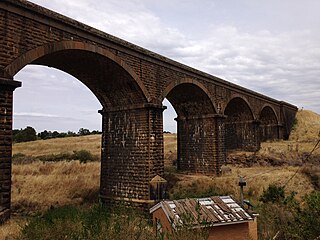
The Malmsbury Viaduct is a large brick and stone masonry arch bridge over the Coliban River at Malmsbury on the Bendigo Railway in Victoria Australia. It was erected as part of the Melbourne, Mount Alexander and Murray River Railway between 1858 and 1861, and was at the time the largest masonry arch railway bridge built in Victoria.

This is a list of members of the Victorian Legislative Assembly from the elections of 26 August – 26 September 1859 to the elections of 2 – 19 August 1861.

Edward Snell (1820–1880) was a diarist, artist, civil engineer and surveyor, responsible for the design of the Geelong – Melbourne Railway for the Geelong and Melbourne Railway Company.

The Big Hill Tunnel, in Big Hill, Bendigo, Australia, was built as part of the Melbourne–Echuca railway or Bendigo line. It was commenced by the private Melbourne, Mount Alexander and Murray River Railway Company. When the company experienced financial difficulties it was taken over by the Victorian colonial government in 1856, with the Victorian Railways Department being formed to operate the new public railway system.
References
- 1 2 3 4 John Maxwell, 'Cornish, William Crocker (1815–1859)', Australian Dictionary of Biography, Volume 3, Melbourne University Press, 1969, p. 464. Retrieved on 11 July 2009.
- 1 2 3 4 John Maxwell, 'Bruce, John Vans Agnew (1822–1863)', Australian Dictionary of Biography, Volume 3, Melbourne University Press, 1969, pp 277–278. Retrieved on 11 July 2009.
- ↑ "THE EIGHT-HOURS' SYSTEM AND MESSRS. CORNISH AND BRUCE". The Argus . Melbourne: National Library of Australia. 23 February 1859. p. 7. Retrieved 18 June 2013.
- ↑ Trial at bar : Cornish and Bruce versus the Queen, before Sir W. F. Stawell, Chief Justice of Victoria, Mr. Justice Barry, Mr. Justice Williams, John Ferres, Government Printer, Melbourne 1866
- ↑ Victorian Parliamentary Papers, 1860, report of the Select Committee of the Legislative Committee on Bridge Contracts